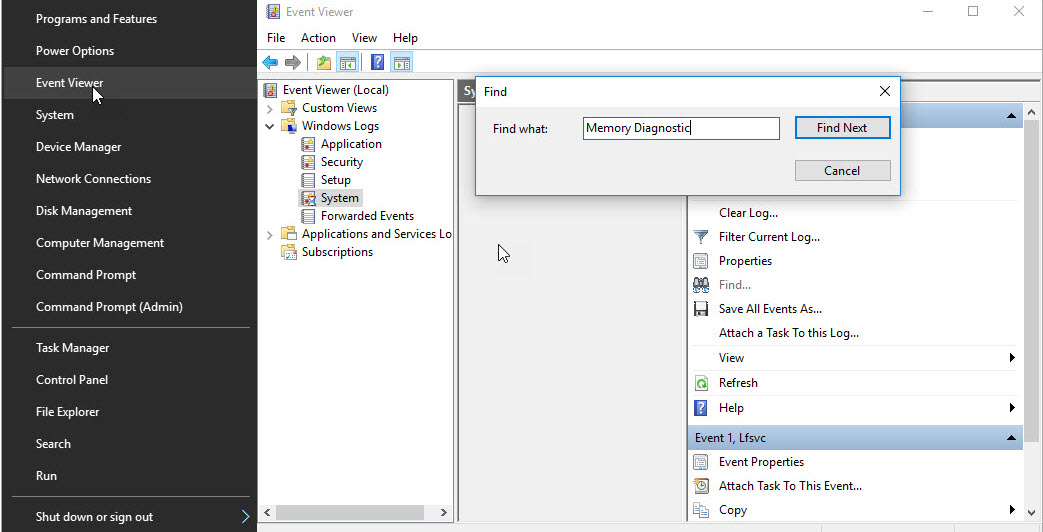

- #Windows 7 blue screen memory management how to#
- #Windows 7 blue screen memory management windows 7#
You can go through the entire gallery to see exactly how each tool works. I believe this is by far the best tool for understanding at a glance where your memory is being used. The Memory tab shows how your memory is being used, with detailed information for each process and a colorful Physical Memory bar graph to show exactly what's happening with your memory.
#Windows 7 blue screen memory management windows 7#
Resource Manager was introduced in Windows Vista, but it has been completely overhauled for Windows 7 and displays an impressive amount of data, drawn from the exact same counters as Perfmon without requiring you to customize anything. Resource Monitor The easy way to open this tool is by clicking the button at the bottom of the Performance tab in Task Manager. I'll discuss Committed Bytes in more detail later. The latter is the same as the Available figure in Task Manager. For this exercise, I configured Perfmon to show Committed Bytes and Available Bytes. The number of available counters, broken into more than 100 separate categories, is enormous in Windows 7 you can choose from more than 35 counters under the Memory heading alone, measuring things like Transition Pages RePurposed/sec. To use it, you must create a custom layout by adding "counters" that track resource usage over time. (One big advantage it has over the others is that you can save To run it, click start, type perfmon, and press Enter. Performance Monitor This is the old-school Windows geek's favorite tool. The most important values to look at are under the Physical Memory heading, where Total tells you how much physical memory is installed (minus any memory in use by the BIOS or devices) and Available tells you how much memory you can immediately use for a new process.
#Windows 7 blue screen memory management how to#
For someone who learned how to read memory usage in Windows XP, the Performance tab will be familiar, but the data is presented very differently. Task Manager You can open Task Manager by pressing Ctrl+Shift+Esc (or press Ctrl+Alt+Delete, then click Start Task Manager). To see all three memory-monitoring tools at work, be sure to step through the screen shot gallery I created here: How to measure Windows 7 memory usage. What helped me understand exactly what was going on with Windows 7 and RAM was to arrange all three of these tools side by side and then begin watching how each one responded as I increased and decreased the workload on the system. The behavior in all cases is strikingly similar and consistent, although you can get a misleading picture depending on which of three built-in performance monitoring tools you use. To help cut through the confusion, I've taken a careful look at memory usage on a handful of Windows 7 systems here, with installed RAM ranging from 1 GB to 10 GB. Someone who became an expert on measuring memory usage using Windows 2000 might have been able to muddle through with Windows XP, but he would be completely flummoxed by the changes that began in Windows Vista (and its counterpart, Windows Server 2008) and have continued in Windows 7 (and its counterpart, Windows Server 2008 R2). And then there's the fact that Windows memory management has evolved, radically, over the past decade.

Even worse, web searches turn up mountains of misinformation, some of it on Microsoft's own web sites. It doesn't help that the topic is filled with jargon and technical terminology that you literally need a CS degree to understand. Much of it is well-meaning but just wrong. Since Windows 7 was released last October I've read lots of articles about the right and wrong way to measure and manage the physical memory on your system. And don't believe anyone who tells you otherwise. Probably caused by : SYMEFA64.Windows memory management is rocket science.

also has no support for Win7)īugCheck 1A, Graphics Card: VisionTek ATI Radeon 4570 (removed this.

RAM: 6 GB OCW DDR2 RAM (this is the best I can recall off the top of my head) I am not entirely sure that is when the problems started, but I have since removed the card and uninstalled the drivers. The computer seemed to be doing ok before I installed a Graphics card. When I ran the bootable CD, it got through the first test ok, then had Failures on the INVC test and LRAND test before freezing during the STRIDE 6 test.Ī little extra (possibly useless) history. I found another post saying to run Microsoft's memory diagnostic tool. Sometimes I get the BSoD with one of the two following errors: MEMORY_MANAGEMENT or BAD_POOL_HDR (something like that). The computer works enough to start up and use some basic software, but it eventually crashes, particularly when playing WoW. I am having troubles with my first build.


 0 kommentar(er)
0 kommentar(er)
